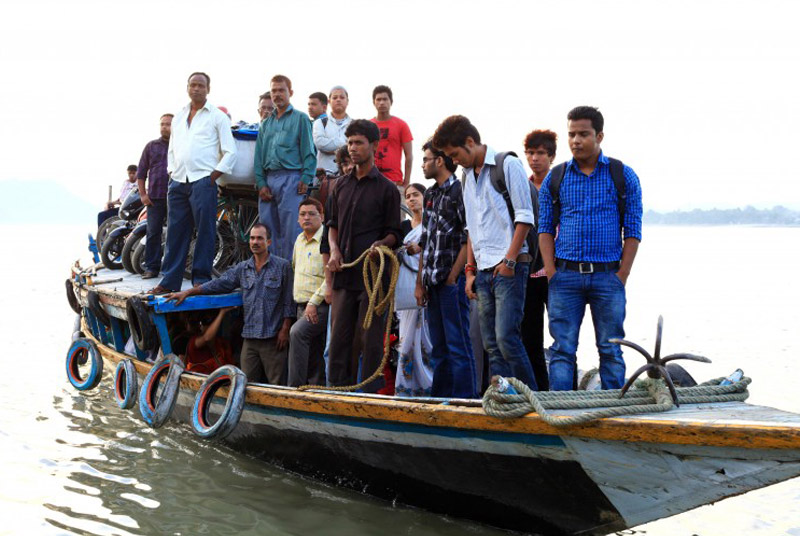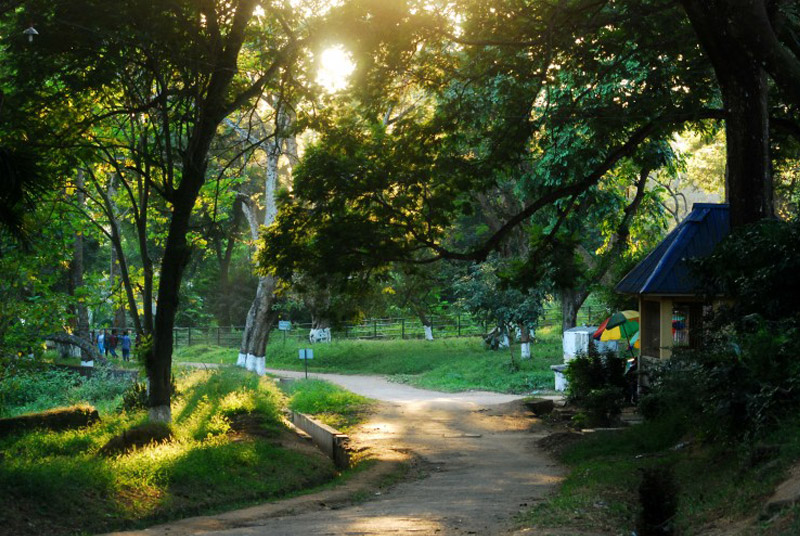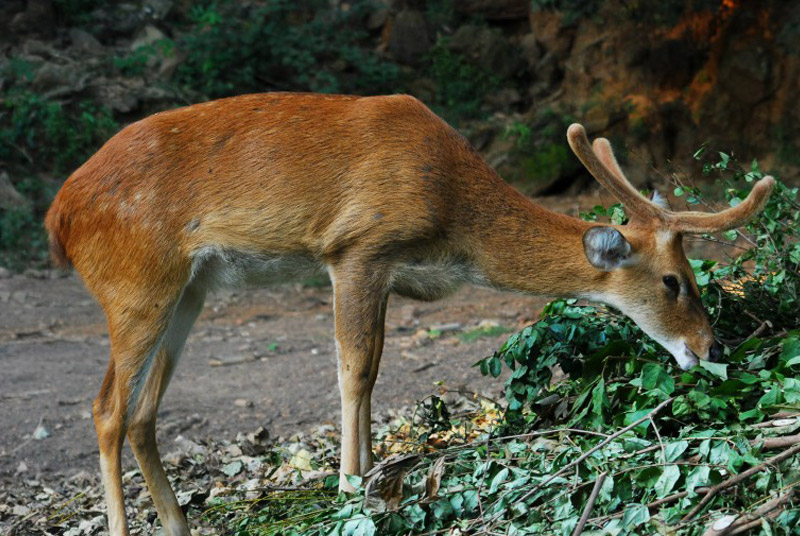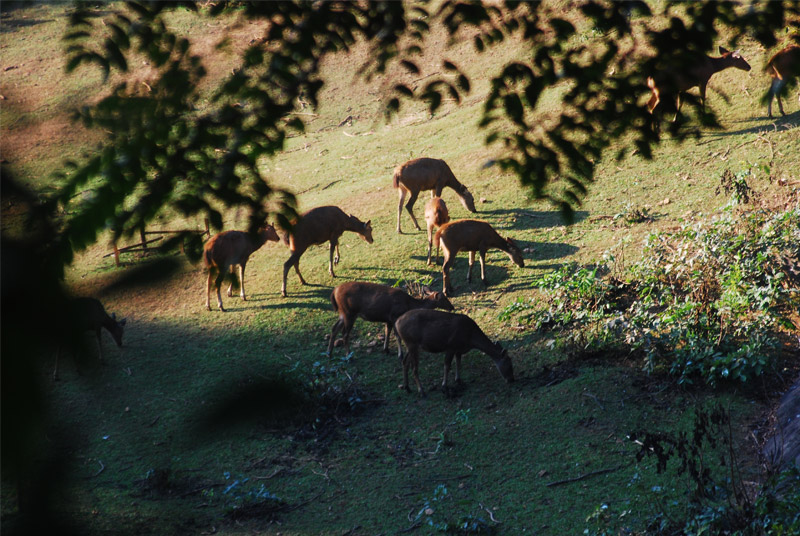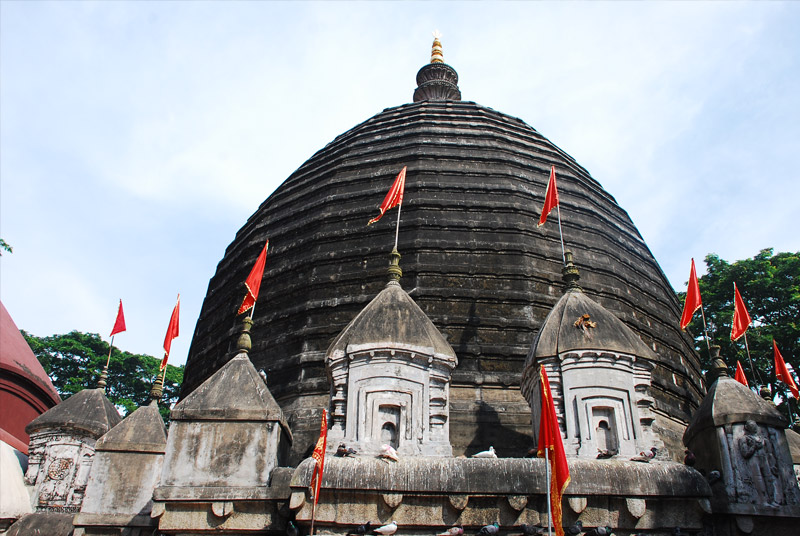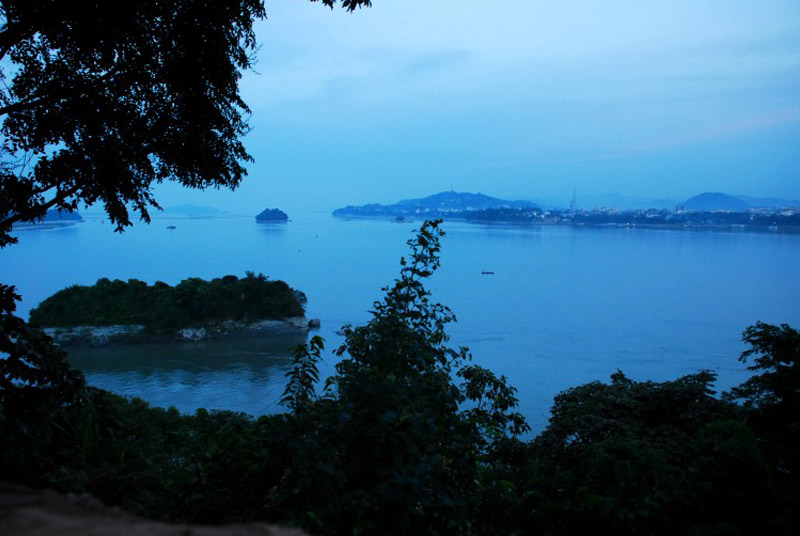 |
About
Guwahati is a fast growing metropolitan city that is by far the most important city in the state of Assam. Today it is known as the largest commercial, educational and industrial center of the entire northeastern region in India. Guwahati can be visited for reasons more than one. The fabled land of tea plantations and nature tourism has many other gems up its sleeve to lure visitors. The gateway to seven sisters (seven states of northeast India) is indeed a land that hides a few mysteries under its veil..
The city is located in the country's northeastern state of Assam and lies idly on the banks of the mighty Brahmaputra River at the foothills of the Shillong Plateau. Guwahati is the capital city of Assam. The city lies in the northeastern side of Assam and located at an altitude of 55 meters above sea level. It is also a major cultural hub and a center for sports in the northeastern region. Guwahati is also an important transportation junction in the entire region..
History
Guwahati has existed over several hundreds of years and has been mentioned in ancient epics and Puranas. One can undoubtedly say that it is one of the ancient cities in Asia. The name of Guwahati has been mentioned in Mahabharata to be the capital of Bhagadatta and Kamakhya. The ancient name was "Pragjyotishpura" which means the light of the east. There are many remains from the ancient past that tell about the culture and history of the bygone era..
The city has witnessed several rulers since the 6th century. The Varman dynasty was predominant here in the 6th century and they made it their capital. The Kamarupa kingdom also existed here at same time. The Chinese traveller Hiuen Tsang has mentioned the city as a huge kingdom during the rule of the Varman king, Bhaskar Varman, in the 7th century AD. He says that the city was probably a base for the kingdom's naval force and had officers who were experts in naval warfare..
During the medieval times between the 12th century and 15th century, the city lost its importance and became an outpost of the Ahom and Koch Hajo kingdoms. Later the east Koch kingdom was captured by the Mughals and became the protectorate of Ahom. Frequent conflicts between the Mughals and Ahoms were common but Guwahati continued to be the prized possession of Ahom..
Ahom defeated the Mughals 17 times and all the wars were led by the great Ahom general Bir Lachit Borphukan. One of the major battles fought here was the Battle of Saraighat in 1671, where the Mughals were overrun by Lachit Borphukan. Borphukan became a heroic figure and remained so till his death. Due to his heroic deeds, Guwahati could never be captured by the Mughals..
The modern history of Guwahati begins from 1826 when the lower half of Assam came under British rule. In 1906, the city was already under British rule. Later the state of Assam and Guwahati merged with the Bengal Presidency in 1906. The city became an important part of the northeastern region. After 1947, Guwahati merged with the Indian Union but was not the state's capital until the state of Meghalaya was carved out of Assam and the capital shifted from Shillong to Guwahati..
Geography
Between the mighty Brahmaputra and the Shillong Plateau lies the modern city of Guwahati. The city is surrounded by Narengi town to the east and the LGB international airport to the west. The city straddles the valley of the river Bharalu, which is the tributary of Brahmaputra River. Numerous hills surround the city which makes the view irresistibly scenic. Nilachal hills lie to the west of the city and revered as the place of Goddess Kamakhya. Guwahati encompasses an area of 556 square kilometers and is elevated 55 meters from the sea level. The city is located 440 km east of Siliguri while shilling lies merely 100 km away..
Guwahati is physically divided into two parts, one in the north and the other in the south. The coordinates of the city are 26.18°N and 91.76°E. Guwahati has many rivers and tributaries flowing past the region. Brahmaputra is the major river here while the rest are tributaries of this great river..
Climate
The climate is subtropical and humid but the weather is not extreme. The minimum average temperature normally hangs around the 19°C mark while the maximum stays around 29°C. The high humidity is inherent and often rises past 80% except during the winter season when it is dry. Summer begins in March and ends by June. The hottest month of the year is June. The monsoon arrives in June and stays till September. The annual rainfall received by the city is a healthy 1613 mm. Guwahati also experiences an autumn season after the monsoons that begins in September and ends by November. Winter begins in November and stays till February. During winters the temperature can get as low as 10°C. The best time to visit Guwahati is from October to April when the climate is pleasant and enjoyable..
Demographics
Guwahati is one of the fastest growing cities in India. It is rapidly increasing in population as well. People from all over the country have settled here due to its booming economic prospects. The population since 1971 has grown manifold and it is estimated that more than 1.6 million people currently live in Guwahati..
Men constitute 55% of the total population, while 45% of the numbers are females. Children aged below 6 years make up 10% of the population. The literacy rate of Guwahati is impressive. The total literacy rate of 78% is comprised of 81% educated males and 74% educated females..
Tourism
Guwahati is fast emerging as an attractive tourist destination in India. Many people visit Guwahati to explore this stunning beauty that has many attractions owing to its historical, ethnic and aesthetic significance besides the unparalleled natural beauty for which the city is already renowned the world over. Plenty of green hills, tea plantations, religious places, premier educational institutes, historical monuments and archeological sites add to the aura of the place. Every tourist gets something unique to his liking from the temples, wildlife and cultural sites..
Accommodation
As it is considered to be one of the most upmarket destinations in northeastern India, you will find several types of hotels that come in all budgets. Plenty of budget hotels are located on G. S. Road as well as near the railway station..
Luxury hotels can be found at various strategic spots that provide great scenic views of the city and also in close proximity to significant tourist spots. There are many 4 star and 5 star hotels that provide luxurious amenities to spend the time leisurely in unparalleled comfort. Luxury hotels are available within Rs. 2,500 per night's stay while 5 star hotels charge in excess of Rs. 5,000..
Some of the luxurious hotels include Hotel Raj Mahal situated near the Guwahati railway station, Dynasty Hotel which also lies near the railway station and Hotel Kiranshree Portico which is located in the Paltan Bazar area..
3 star hotels like Hotel Brahmaputra Ashok is situated on the banks of the river and provides a great view of the river. You can also try Vishwaratna Hotel, Hotel Pragati Manor, Ginger Hotel and Hotel Ambarish which are equally great..
Resorts are also available in Guwahati. The Brahmaputra Jungle resort is on a hillock adjacent to the nearby Amachang Wildlife Sanctuary..
Government and politics
Culture and language
The people of Guwahati actively take part in dance and music as they are an integral part of their culture. You can understand their culture by the types of folk dances that they perform. The most important among them is the Bihu dance which is quite a beautiful display to witness. Sattriya dance is another classical dance form. Many fairs and festivals are celebrated here. Important among them are Bihu, Brahmaputra beach festival, New Year, Ambubachi Mela, Durga Puja, Holi and Diwali. There are three types of Bihu celebrated at different times of the year..
Food and cuisine also speaks highly about the culture. Although the food is simple, it is prepared with great care and culinary taste..
Places to eat
You can find plenty of restaurants here that will tickle your taste buds. Although there are plush restaurants that serve all kinds of international cuisine, you can get adventurous and try the humbler places to eat. Try the Assamese Thali which comprises of rich, fish and vegetable curry. There are plenty of fast food outlets as well as eating joints. Panbazaar is a good place to have noodles. Momo Ghar is a famous eating joint where you can get lip-smacking pork momos. The favorite delicacy of Guwahati is Goza which is a sweet preparation..
Transport
There are many options for transport in Guwahati as it is a hub for North-Eastern India. One can opt for various modes of transport to travel in and around Guwahati with ease..
Air
Lokpriya Gopinath Bordoloi International Airport at Borjhar is around 20 km from the city. Flights to any major city of India are available from the airport besides some international flights to the cities of Bangkok and Paro..
Guwahati is the headquarters of the North East Frontier railway zone. Guwahati junction is a major station where plenty of trains halt and operate from. The city is well connected to major cities and smaller cities through a wide network of railway lines. Guwahati Rajdhani, Guwahati Bangalore Express, Saraighat Express are some of the major trains that operate from here..
Roads
National Highway 31 connects the city to the rest of the country. Many buses travel to all parts of the state as well as other adjoining states. Adabari, ISCT Guwahati and Paltan Bazaar are major bus transit points. In the city you can travel by auto rickshaws and trekker services..
Waterways
National Waterway No 2 which happens to be the Brahmaputra River itself provides good water transport facilities. The terminal point is at Pandu. It is used for transporting cargo and commodities.
Last Updated on : March 28, 2015

